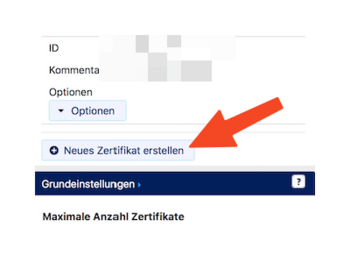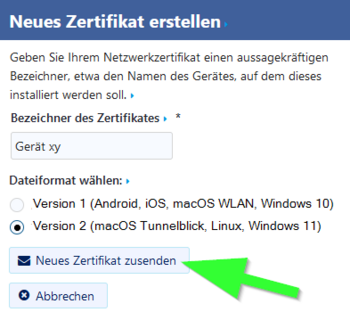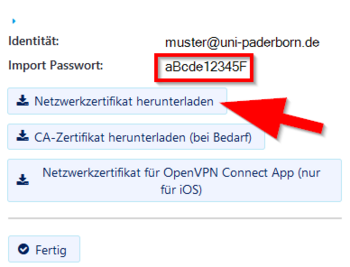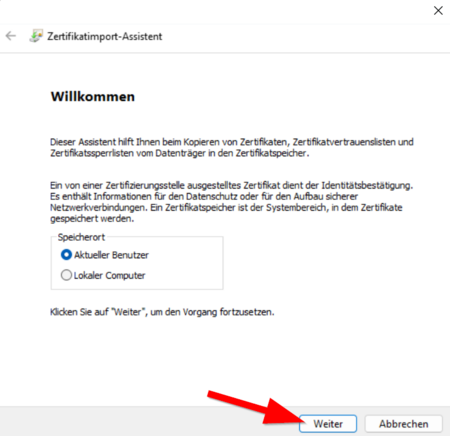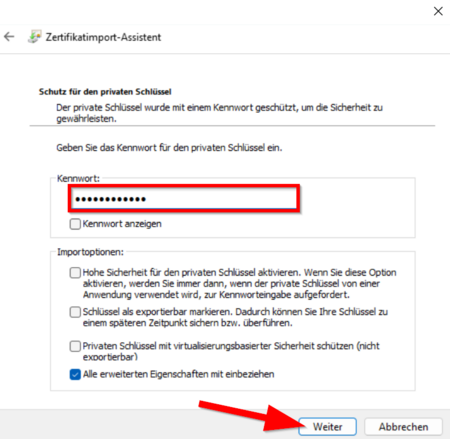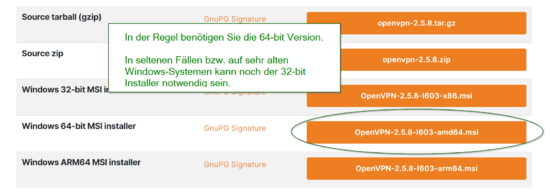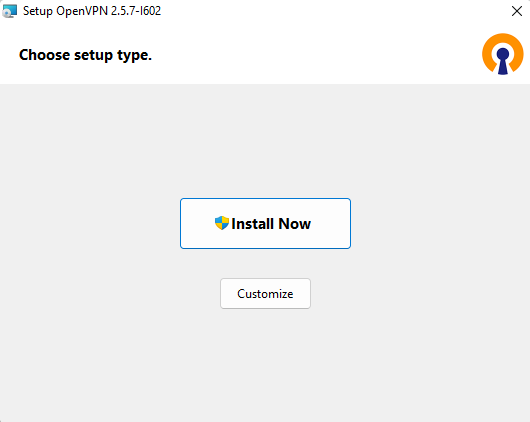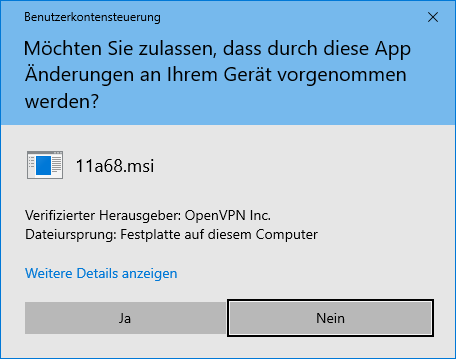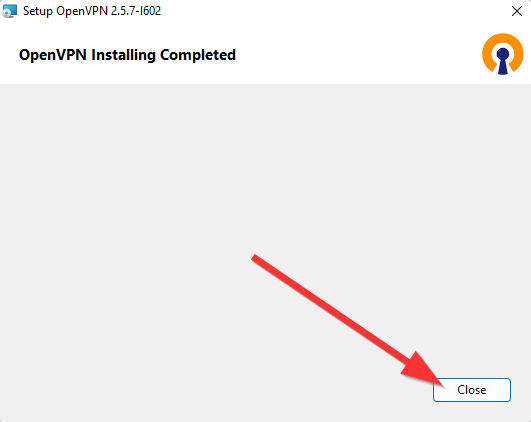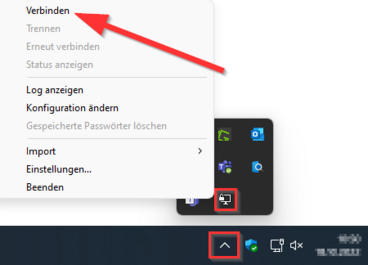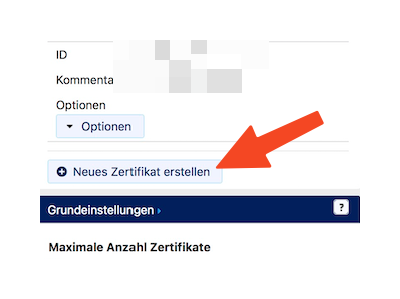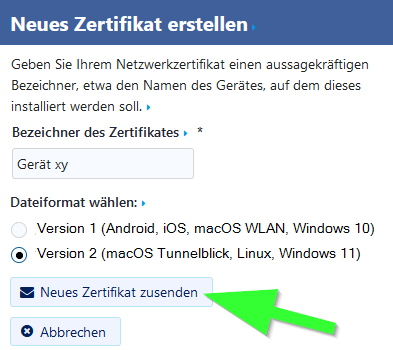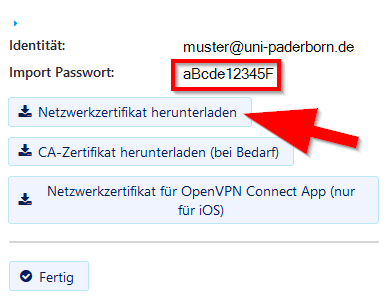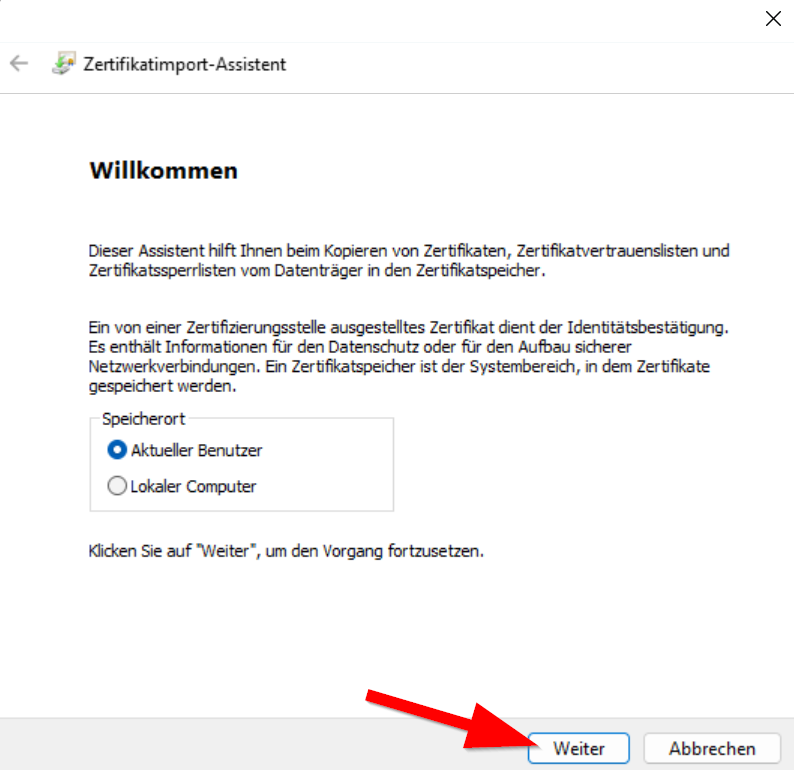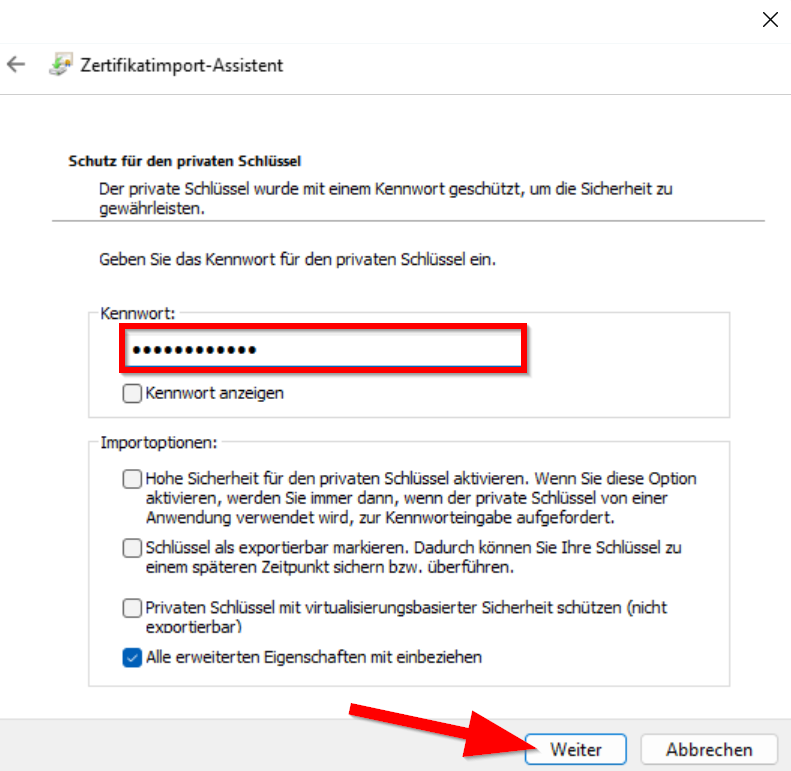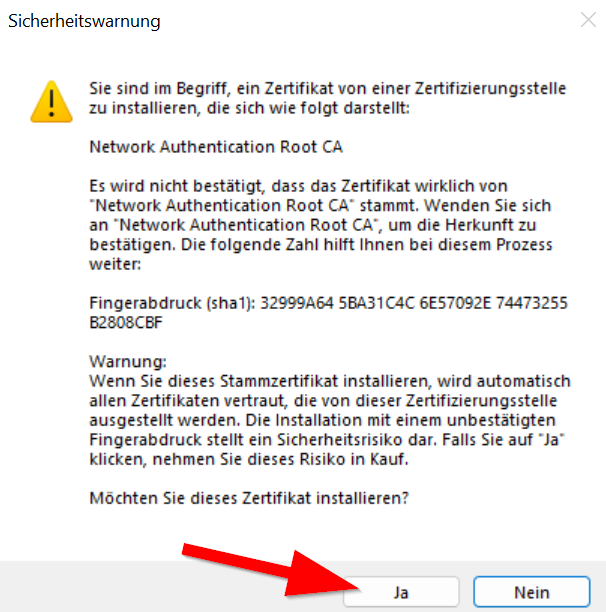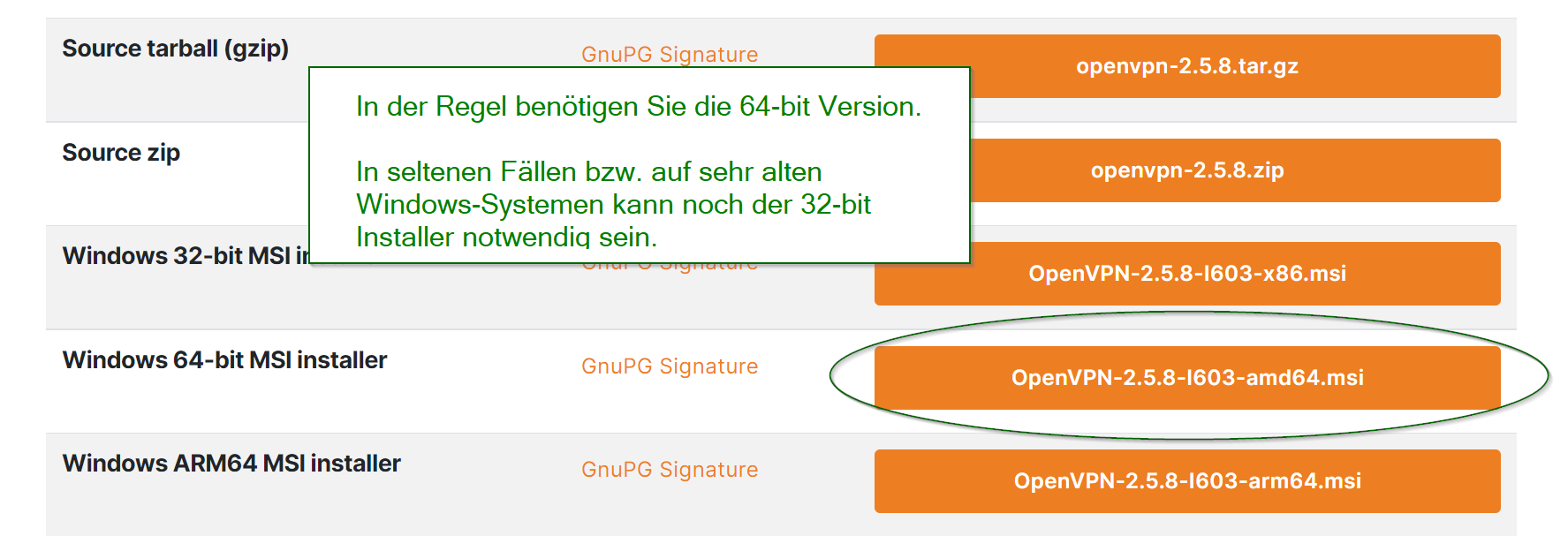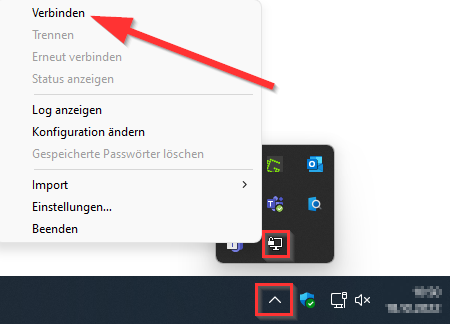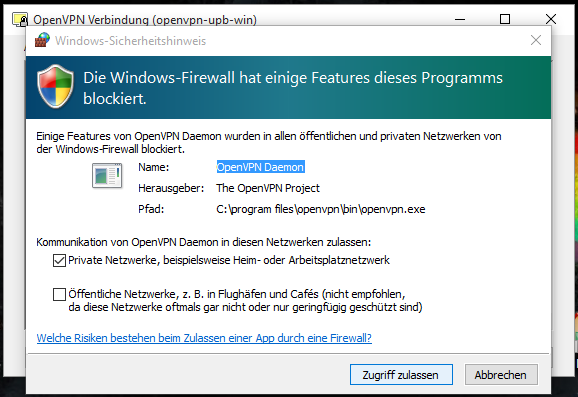VPN (Virtual Private Network) is needed if you want to use services from outside the University of Paderborn that are only accessible within the university network. VPN guarantees secure access to the University network through other networks (dial-in via other providers, external company or university networks).
You need VPN if you[Bearbeiten | Quelltext bearbeiten]
- want to access licensed databases of the University Library,
- want to access a Network drive/ group storage
- use the green sockets within the university (these are only available via VPN for security reasons)
- use a license server of the university,
- want to access secured pages of the university,
- would like to work with the CMS TYPO3 from home.
You do not need VPN if you[Bearbeiten | Quelltext bearbeiten]
- want to read your e-mails on webmail,
- want to send e-mails via the ZIM mail server (see Mail).
What needs to be done?[Bearbeiten | Quelltext bearbeiten]
- Install personal network certificate
- Install OpenVPN.
- Start OpenVPN
- Download configuration file:
Note: You can click on "Download" here and download your configuration file. This is not a screenshot ;-)
- Import configuration file
- Establish a VPN connection
Step-by-step instructions[Bearbeiten | Quelltext bearbeiten]
Install network certificate[Bearbeiten | Quelltext bearbeiten]
In order to use OpenVPN, a personal network certificate must be installed on your PC.
Are you already using the Eduroam WiFi network on this PC?
- Then you already have a personal network certificate. Skip this step.
Are you not using the Eduroam WiFi network on this PC yet?
Then click here for help with certificate installation.
Access using a browser, e.g. Firefox or Edge, go to the service portal and log in with your user name and password from your university account.
- Go to Benutzerverwaltung and then Netzwerkeinstellungen.
- Click Neues Zertifikat erstellen.
- Give the certificate a unique name (e.g.: cell phone)
- For Windows 11, select Version 2 as the file format.
- For older versions such as Windows 10 please use version 1.
- Then click on Neues Zertifikat zusenden.
- A new network certificate has been created for you.
- First copy the Import Password to the clipboard.
- Now click on 'Download Network Certificate.
After saving it on the computer, the network certificate must be installed under the account that is to be used with Eduroam. Open the certificate with a double click. The certificate import wizard then starts automatically.
- Click on Continue.
- Paste the import password that we just copied.
- Leave the default settings intact.
- Note: It is not allowed to tick "Activate high security for the private key". The Windows WLAN client currently does not support this function and therefore no connection to eduroam would be possible.
- Then click Next
- In the following window, if necessary, click on Next and finally on Finish.
- If a security warning appears, click Yes.
- Now click on "OK".
Note: Now open the same certificate again and install it a second time. This allows us to work around an error in the Windows certificate manager. Do not create a new certificate for this!
Note: Only one network certificate from the University of Paderborn may be installed. Multiple certificates can cause problems. More about this here.
Download OpenVPN[Bearbeiten | Quelltext bearbeiten]
Now download the OpenVPN program from the manufacturer's website.
https://openvpn.net/community-downloads/
- ATTENTION: DO NOT install the BETA version!
Install OpenVPN[Bearbeiten | Quelltext bearbeiten]
Now let's install the program.
After successful installation, the new “OpenVPN GUI” icon will appear on the desktop.
 Step 8: The OpenVPN client is started using this symbol.
Step 8: The OpenVPN client is started using this symbol.
Download configuration file[Bearbeiten | Quelltext bearbeiten]
Download the configuration file, select the VPN you want to connect to in the box below and click on Download.
Normally "Uni-VPN (Standard)" should be the right choice, but if you have problems with the connection, try "Uni-VPN-TCP" instead.
Note: You can click "Download" here and download your configuration file. This is not a screenshot ;-)
Direct all internet traffic through the tunnel?
- Accessing online resources may require that you route all network traffic through the tunnel.
- You do not need this option to simply access the network drives.
Start OpenVPN[Bearbeiten | Quelltext bearbeiten]
If OpenVPN is not already started (see tray icon), start it using the "OpenVPN GUI" icon on your desktop.
- The OpenVPN client is started via this symbol.
- An icon with a small lock will now appear at the bottom of the taskbar.
- Do not confuse it with the Windows network icon.
Load configuration[Bearbeiten | Quelltext bearbeiten]
Open the configuration file with a double click. Alternatively, you can also do the following:
- Right-click on the OpenVPN icon at the bottom right of the task bar.
- Then click Import File.
- Now open the file "OpenVPN-UPB-NG_*.ovpn" - We have just downloaded it.
Establish connection[Bearbeiten | Quelltext bearbeiten]
Now we set up a VPN connection.
You can see the status of the VPN by the color of the symbol:
| No VPN connection active | |
| VPN connection is being established | |
| VPN connection active |
As soon as a green status is displayed, you are connected to the internal university network.
